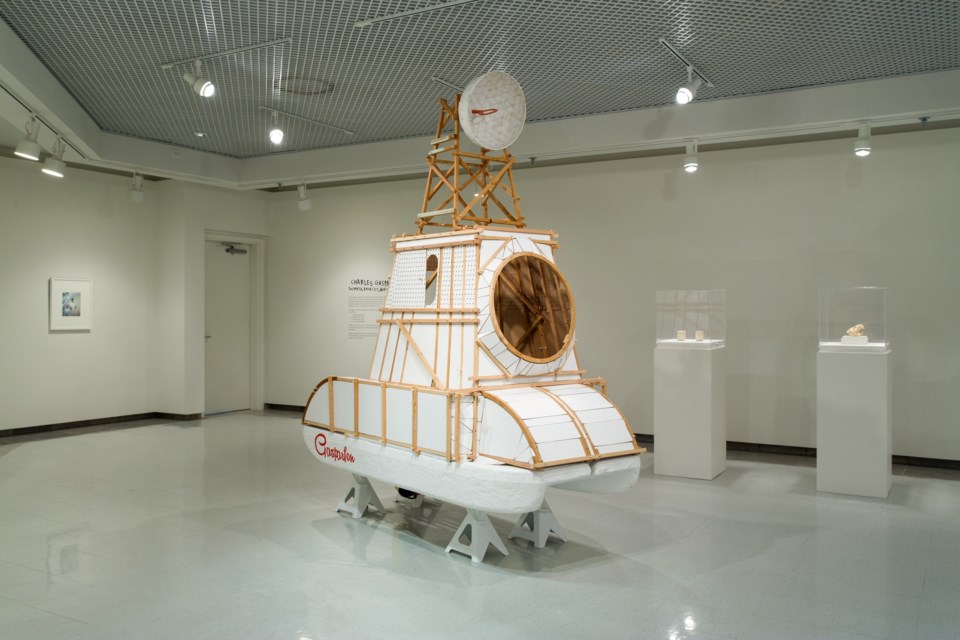Two fantastical, quirky, and funny exhibitions are coming to the Moose Jaw Museum & Art Gallery (MJM&AG) this month. Their creators hope to elicit smiles, thoughtfulness, and (perhaps) a bit of existentialism from viewers.
Sylvia Ziemann’s Keeping House at the End of the World and Todd Gronsdahl’s Saskatchewan Maritime Museum will share space in the MJM&AG’s Norma Lang Gallery from May 27 to August 28.
Keeping House at the End of the World
Keeping House at the End of the World features a variety of paintings, drawings, and audio/visual components, as well as a series of miniature dioramas with anthropomorphic animals such as donkeys, rabbits, and foxes.
“It’s looking at apocalyptic stories, but in a very playful way,” said Jennifer McRorie, director and curator at MJM&AG. “I think audiences will find it fascinating and playful and humorous and something to discover and explore.”
Ziemann’s art has close attention to detail that keeps viewers engaged trying to discover what else is hidden in each scene. The subject matter is surprisingly grim, contrasting dystopia with utopia, and asking both how to react to the imminent end of the world, and how to react to a world that has ended.
Some of her animal/human hybrids tuck themselves away in their homes in isolation and fear. Others protest in a vague, undefined way, still fear-driven and yet actively attempting to do something, anything to make a difference.
The Saskatchewan Maritime Museum
“There’s kind of an absurdity to it,” McRorie said. “They’ll pick up pretty quickly that (Gronsdahl’s work) is very playful and that they’re in on a joke.”
The Saskatchewan Maritime Museum centers on a character Gronsdahl has created named Charles Gaspar.
Gaspar is depicted as a historical figure — a wealthy inventor and explorer who navigates a fictionalized version of Saskatchewan’s rivers and lakes.
Although the absurdity of a Saskatchewan Maritime Museum is funny on the surface of it, gallery viewers may wish to deliberately suspend their disbelief for a short time to explore Gaspar’s history seriously.
What would it be like if Saskatchewan had had to mobilize against German U-boats invading the South Saskatchewan River in WWII? What if the endless prairie skies and farmlands were features of the province’s waterways instead of the other way around?
McRorie said that Gronsdahl is “speaking to the fact that the narratives that are presented in museums are always presented as truth, and yet they’re pulled from certain perspectives. So, is it always the real truth? Whose truth is it?”
These are solo exhibitions, but when McRorie was searching for possibilities for the year, she noticed that The Saskatchewan Maritime Museum and Keeping House at the End of the World shared folklorish, fairytale-like connections that make for a compelling combination.
“I think there’ll be an interesting dialogue with the two exhibitions in this space,” she said. “I’m hoping that it’ll appeal to Moose Jaw audiences, but also to tourists that come through this summer.”




